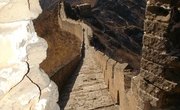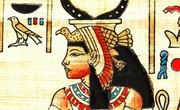A continent is considered a main landmass. Earth consists of seven continents, including Asia, Africa, North and South America, Antarctica, Europe and Australia/Oceania. The islands of the Caribbean, Central America, and Greenland are all considered part of North America. When teaching students about the seven continents, it is often helpful to incorporate different strategies of learning, such as visual learning, to reinforce geography skills.
Step 1
Write the word "continent" out on the board and have students explain the meaning of the word.
Step 2
Identify the seven continents by writing the names on the chalkboard. If a student provides an incorrect response by using the name of a country or a state, explain how these are part of a larger continent.
Step 3
Use the world map and have students volunteer to identify a specific continent.
Step 4
Identify the oceans around each continent.
Step 5
Identify which hemisphere(s) each continent is located in. For instance, Europe is located in the northern and eastern hemispheres and Australia/Oceania is located in the eastern and southern hemispheres.
Step 6
Divide students into seven groups and assign each group of students a continent.
Step 7
Instruct students to use the Internet or library to find information on their assigned continent. Students should print photos to help them describe the continent, find information on the land mass, population, countries that are part of the continent, climate and other pertinent information.
Step 8
Have each group create a 20-minute presentation. Presentations should be given in class and include the name of the continent and pertinent facts about the continent’s climate, people and geography.
Step 9
Allow time for a short question-and-answer session and correct any false information given about the seven continents.
Step 10
Give a final quiz on the seven continents to include information on the location of the continents and information presented during the student presentations.
Related Articles
References
Writer Bio
Renee Claire is a registered nurse with more than 20 years of experience and a specific interest in families. She graduated from Waubonsee College in Illinois in 1986 with a degree in nursing and from the University of St. Francis in Illinois with a bachelor's degree in health arts. She began writing online professionally in 2009.











